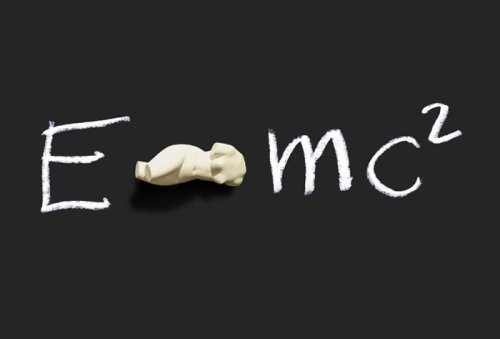Stefano Bonacci
dal 8/7/2005 al 24/7/2005
Segnalato da
8/7/2005
Stefano Bonacci
Senkmo Studio, Viborg
299792.458 kms. ''The project is about the relationship between light and beauty. I first made this work on a blackboard in Cyprus, but for this occasion will be completed by an electrical neon lights and an Olaf Roemer image. The reference to Roemer is necessary for me to show the very importance of the nature's observation.'' S. Bonacci

The project for Senko Studio is about the relationship between light and beauty. I first made this work on a blackboard in Cyprus, but for this danish occasion will be completed by an electrical neon lights and an Olaf Roemer image. The reference to Roemer is not only a link with the Denmark's history, but is necessary for me to show the very importance of the nature's observation. The speed of light appear us like an infinite dimension, but through this element we understand finally a new kind of beauty an new concepts of time.
Stefano Bonacci 2005
A note on Stefano Bonacci law
There is something striking, at first sight, in Einstein’s most famous equation E=mc2, that is its incredible synthesis, its great simplicity. The paper of only three pages brings to the conclusion – with a similar equation, but not exactly this one –, “Does the inertia of a body depend upon its energy content?†(“Ist die Trägheit eines Körpers von seinem Energiegehalt abhängig?“, in Annalen der Physik, 18:639, 1905), is a masterpiece of simple deduction from the Special Relativity paper published a few months before. Einstein writes, in the end of that paper (L is the same of E, in the actual notation of the formula):
“If a body gives off the energy L in the form of radiation, its mass diminishes by L/c2. The fact that the energy withdrawn from the body becomes energy of radiation evidently makes no difference, so that we are led to the more general conclusion that the mass of a body is a measure of its energy-content; if the energy changes by L, the mass changes in the same sense by L/9x1020, the energy being measured in ergs, and the mass in grammes. It is not impossible that with bodies whose energy-content is variable to a high degree (e.g. with radium salts) the theory may be successfully put to the test. If the theory corresponds to the facts, radiation conveys inertia between the emitting and absorbing bodies.â€
Actually, the first record of the relationship of mass and energy explicitly in the form E=mc2 was written by Einstein in a review of relativity in 1907. E=mc2 tells that matter and energy are different form of the same thing, in the sense that matter (mass m) can be turned into energy (E), and energy into matter. The theory was successfully tested: if a body emits energy in the form of radiation then its mass is reduced by a proportional amount. And also, but with a semantic shift in the mass concept: the mass of a body increases with velocity and tends to infinity as the velocity approaches the speed of light c.
Does the mass of a body depend on its energy? What is the link between mass and energy?
In his work Bonacci puts a copy of the Venus over or in the place of the equal. He constructs a sort of new balance between the two terms of the formula, which is no more a mathematical equality, becoming other. The act of substitution of the symbol = with the sculpture symbol of classical beauty, of harmony through proportions (which also means: through geometry), implies a reflection, bringing the observer to think that the substitute could have the same function of the previous sign and, moreover, that the equality is realized (or can be realized?) with beauty. And not a generical symbol of beauty is chosen, but specifically a female human body, a human body keeping the secret of comparing and transforming mass into energy, and energy into matter.
Bonacci first made this work on a blackboard, in Cyprus, Venus’ island. It sounded like a homage – and, differently, it appears a homage today, in this year dedicated to Physics – with some sensibility reminding us of Joseph Beuys and of a new economy of spiritual transformation. An economy in which beauty and art can’t be separated from the physical phenomena, from the innermost laws of nature. Another homage is linked to the pioneering work of Olaf Roemer who, making observations in the sky, in 1675 measured the speed of light, previously considered infinite (his anti-dogmatic idea, so close to Galilean scientific spirit, encountered a lot of oppositions). But absolutely more than a homage: Bonacci argues that Roemer's discovery can be considered the very beginning of the postulate of Einstein’s relativity (the finitude and constancy of the speed of light in vacuum), because only from that moment, with a speed of light not infinite, it was possible to rediscuss synchronizations and space-time of events. So the new relativity could be given, by starting to read some phenomena, some aspects of reality, in a different way.
Speaking of energy and light (speed of light) with electrical and radiative energy, other considerations grow related to the neon tubes used to write the letters. Our eye holds memory of some of Mario Merz's neon master works, particularly the one conserved in the garden of the Peggy Guggenheim Collection of Venice, that writes - quoting Rumi - “Se la forma scompare la sua radice è eterna†(If the form-shape disappears, its root is eternal).
Does the root of beauty, of man, transform energy into mass? Thought into act?
Gianluca Poldi, Milan 21st June 2005
(Institute of General Applied Physics, University of Milan, Italy)



